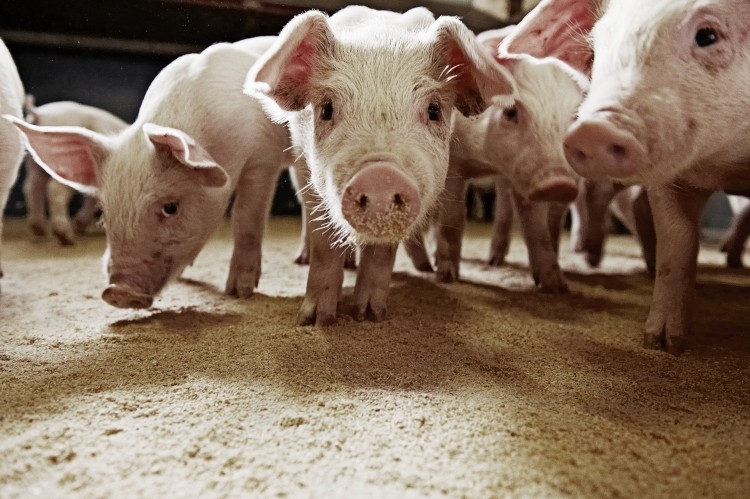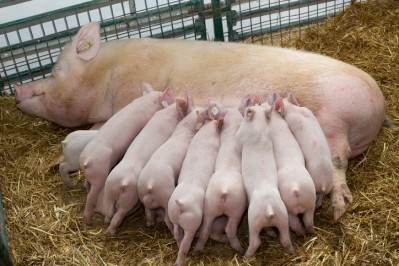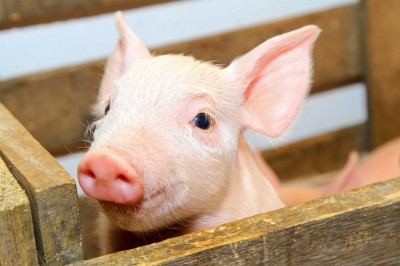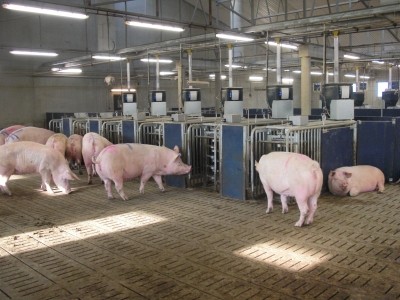Canadian research to inform inclusion of co-products in swine feed

As part of Swine Innovation Porc’s current research program, Dr Ruuard Zijlastra is characterizing new co-product derived feedstuffs that are becoming available to pig producers.
“The focus is around co-products from crop production; one critical step is characterizing them in terms of their digestible nutrient profile and looking at what can be done to improve the quality of the ingredient,” he told FeedNavigator.
Co-products on the rise
Co-products have become increasingly attractive for use in swine diets as alternative feedstuffs to reduce feed costs in the face of rising corn and soybean meal prices. However, dietary inclusion of co-products can reduce feed efficiency and growth performance as well as affecting pork quality.
Co-products also add variability in the macro-nutrient profile of the feedstuff, which is why feed quality evaluation for energy, amino acids and phosphorus content and their availability and digestibility is crucial, said Dr Zijlastra.
He added that evaluation was also important in order to have up to date data, as feedstuffs are changing over time.
“New knowledge on digestible and net energy is required for the new co-products that have become available recently, in order to reduce feed costs and control pork quality,” he said.
Ingredient database
The first stage of the research involves combining digestibility and bioavailability trials and novel feedstuff analysis to come up with available nutrient content figures for different co-product based feed stuffs. This data will then be plugged into a database for nutritionists to consult when formulating feeds, and ultimately the objective is to integrate the data into a pig growth model and validate it via performance trials in commercial swine facilities.
“Our objective is to further expand our ingredient database and have information on successful incorporation of these feedstuffs in feeding programs,” said Dr Zijlastra.
So far, he said he had been amazed at the wide array of feedstuffs that pigs could use in their diets, as long as the ingredients were correctly characterized based on a net energy system.
“We’re finding pigs can comfortably include a wide array of feedstuffs at higher inclusion levels than would be considered practical,” he said.
“This means producers can maximize the opportunities for these feedstuffs to lower the feed costs per kilogram of body weight gain - in other worlds - achieve a return on investment. It’s not difficult to lower the cost per kilogram of feed, but it is difficult to lower the cost per kilogram of gain - that is the holy grail.”
Some of the co-product derived feedstuffs that Dr Zijlastra has been working to characterize are distillers’ grains and glycerol from bio-fuel production, and wheat bran, wheat millrun and wheat middlings from flour milling.
Dr Zijlastra’s characterization work is just one strand of Swine Porc Innovation’s drive to develop feeding programs for growing-finishing pigs to enhance the global competitiveness of Canadian producers.
Academic researchers and government scientists across five Canadian provinces are working on the program.
For example, at the Dairy and Swine Research and Development Centre (DSRDC) in Quebec, researchers led by Candido Pomar are measuring the nutrient intakes of individual pigs using a computerized system which has the potential to enable producers to monitor intakes versus outputs very closely.
And at the University of Guelph in Ontario, Kees de Lange has developed software to estimate the nutrient requirements of swine based on factors such as genotype and environment.








